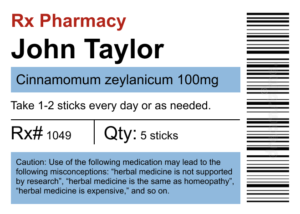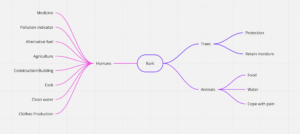I interviewed an employee of Anima Mundi Apothecary in Brooklyn, NY. Sophia is a clinical herbalist who has studied at an herbalism school for three years.
Q: Can you tell us about yourself? How and when did you come to start working here?
A: From a young age, I was exposed to holistic healing from my mother. In my 20s, I dealt with a lot of digestive and hormonal issues and tried conventional medications and skincare but none of them worked. That’s when I started healing myself using herbs and I became passionate about helping others with the same method. I ended up going to herbalism school for three years and have been working at Anima Mundi Apothecary for the last year.
Q: What is the mission of this store? Who is the target consumer?
A: We were founded in 2013 by a Costa Rican herbalist, Adriana Ayales, who was passionate about bringing herbal medicine in New York City and having people reconnect with nature. She developed formulas that would help a general audience, but also created spaces for people who need more customized support as well. The shop’s name, “Amina Mundi,” actually means “one world” or “one soul” and represents the connectedness between us and nature. The goal is to combine traditional medicine with the modern world.
Q: In your opinion, what is the difference between herbal medicine and pharmaceutical medicine? What would you say herbal medicine is better?
A: The major difference with pharmaceutical medicine are the side effects that occur when used. For instance, taking medication for diabetes can often times raise your blood pressure. It can be really hard on the liver and kidneys, and people don’t realize that, and in a lot of cases, we’re overmedicating people. Herbs have been used for medicinal use since ancient times, and you can often take something that ends up benefiting another part of your body. Herbalism allows people to take back the power and knowledge of their medicine.
Q: What do you think is the popular opinion about herbal medicine, especially here in the US? Is it controversial?
A: I think nowadays people is more open to herbalism. People have said we are currently in a “wellness renaissance”. Back in the 80s, there was a shutdown of herbal medicine, but in the last 5-10 years there has been a resurgence. I think the big issue currently is the spreading of false information, especially though social media. It’s important that people go to school and learn through hours of clinical work.
Q: What kind of clinical work and training was taught at your herbalist school?
A: I attended ArborVitae School of Traditional Herbalism, which was taught by an herbalist who was previously a M.D., and learned about anatomy and physiology, different kinds of medicines from all cultures, bodily systems, etc.
Q: Do you think that herbal medicine is gaining popularity in America? Especially with the younger generation?
A: Yes, I do think it’s gaining popularity with the younger generation, who tend to be more open-minded. I think in the 90s and 2000s there was an extremely toxic culture around dieting and undernourishing ourselves in order to be considered beautiful. We are learning from those mistakes and as our society is becoming more progressive and advanced, people are coming back to holistic practices.
Q: Are you aware of any sustainability/ethical issues with producing herbal medicine?
A: Absolutely. When anything becomes popular, it’s important to be aware of the ethics around it. When growing and harvesting herbs, it’s important to be organic or ethically wildcrafted. Wildcrafting means a specialist will collect herbs that are in abundance in an area, and organic means that they are grown without chemicals or additives. There are certain herbs that are endangered, specifically the slippery elm tree. It’s known for healing gastrointestinal issues, but was being overly wildcrafted. A lot of herbalists are now working to grow their own slippery elm.










